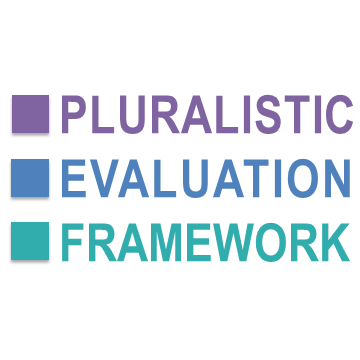
Helping your organization do the right thing
Welcome to the home of the Pluralistic Evaluation Framework
a tool to assist in the appraisal, monitoring and evaluation of all kinds of policies and projects
An introduction to the PEF in less than 5 minutes
What’s the big idea?
Three pillars
The PEF has three pillars to consider in any evaluation:
Stakeholders: identifying the right people and organisations to consult
Processes: identifying kinds of systems and processes that may be affected
Ways of valuing: accounting for multiple kinds of goodness and harm.
These three pillars are linked by a suite of aspects providing criteria that can structure an evaluation.
A suite of aspects
15 aspects provide the main content of the PEF. They are used:
to identify stakeholders and rightsholders who should be considered: from numerical criteria (individuals or communities?) right through to ultimate criteria (ideological and faith communities)
to recognise systems and processes that need accounting for: starting with the physical aspect (e.g. hydrology, climate), through to the ultimate aspect (ideological dynamics)
to elicit different ways in which stakeholders may value or disvalue a situation: starting with the biotic aspect (healthy?) and through to the ultimate aspect (inspirational?). In this context we call them modes of valuing.


